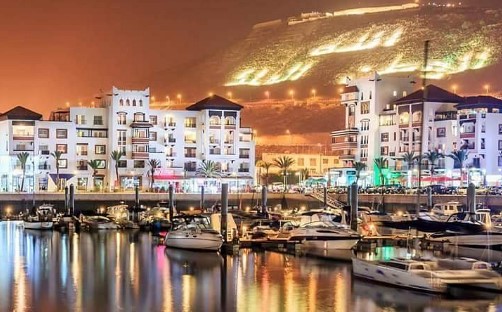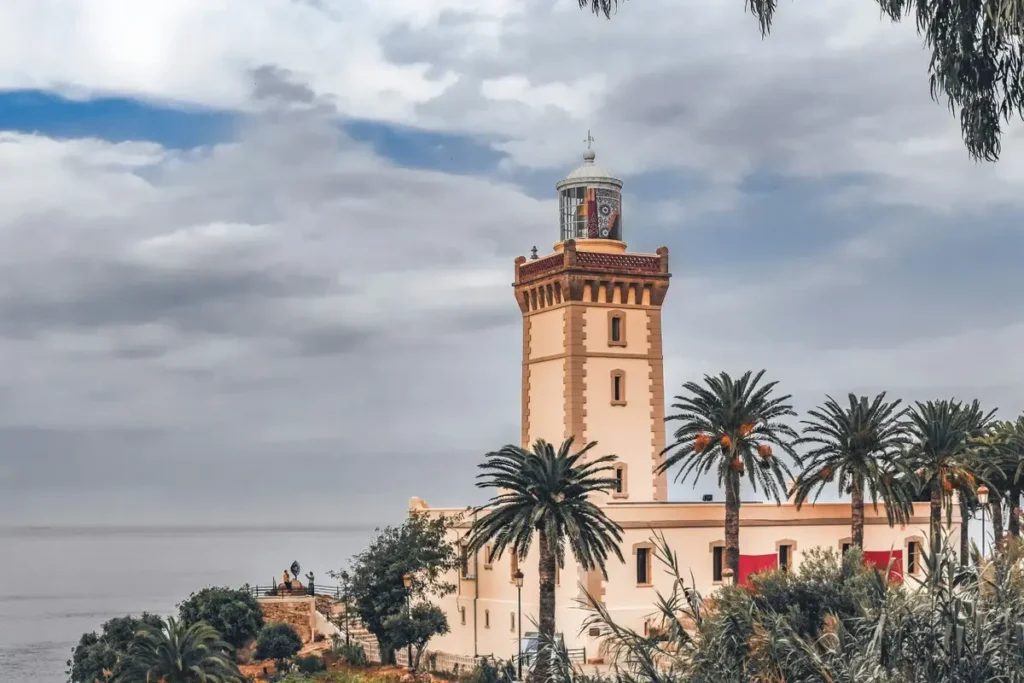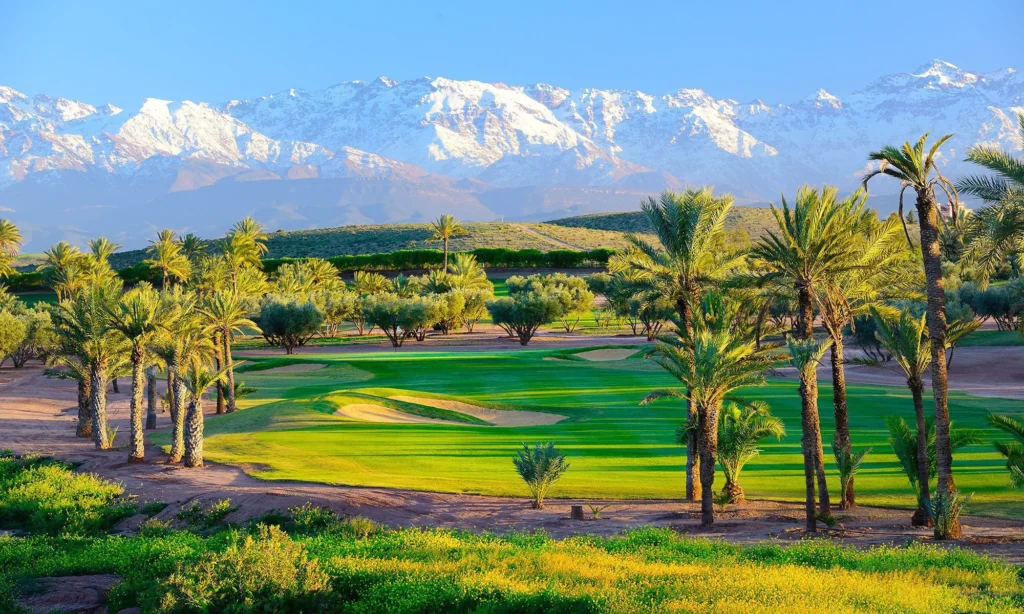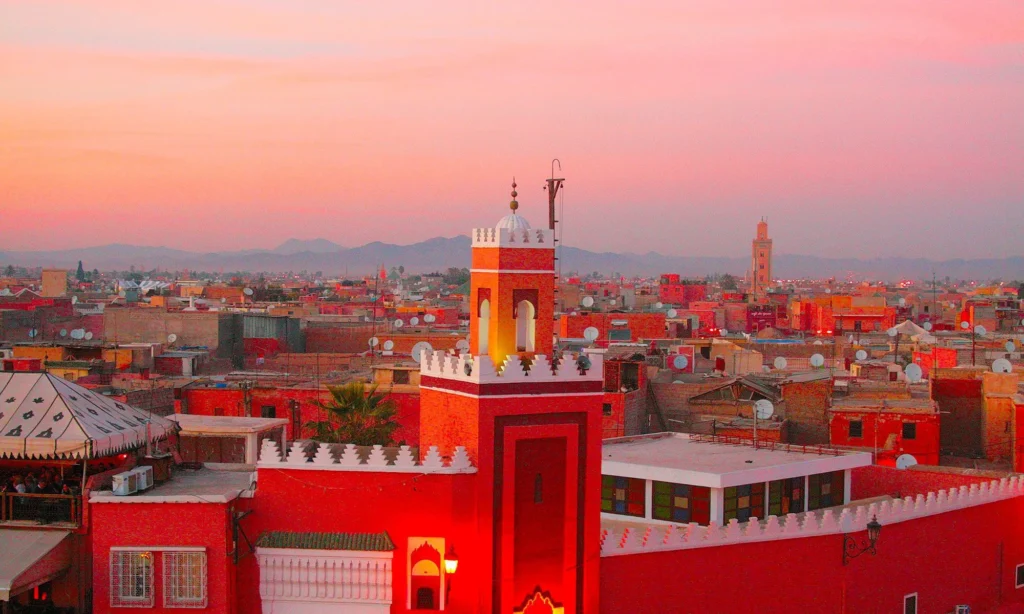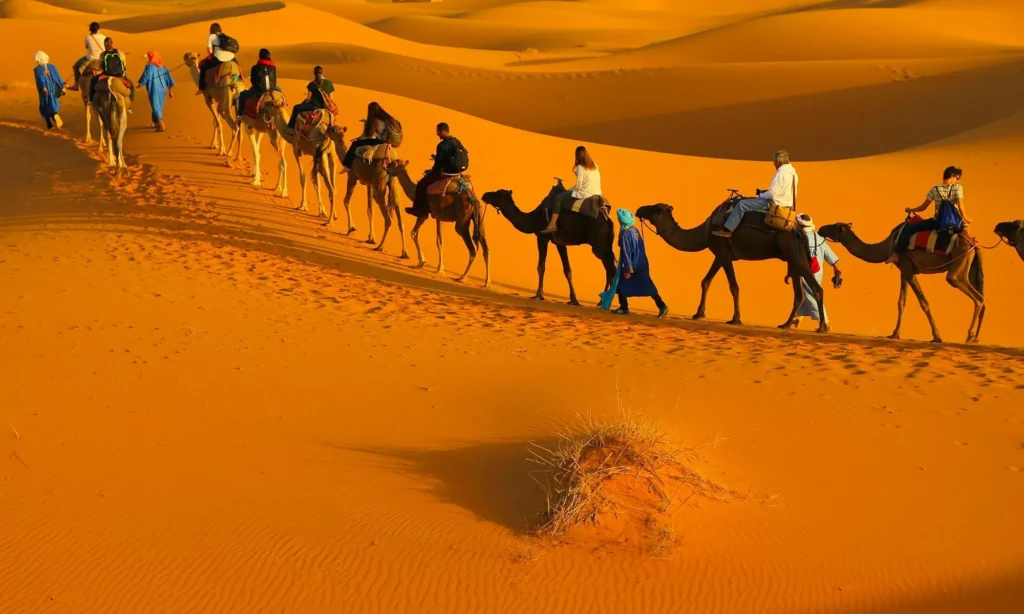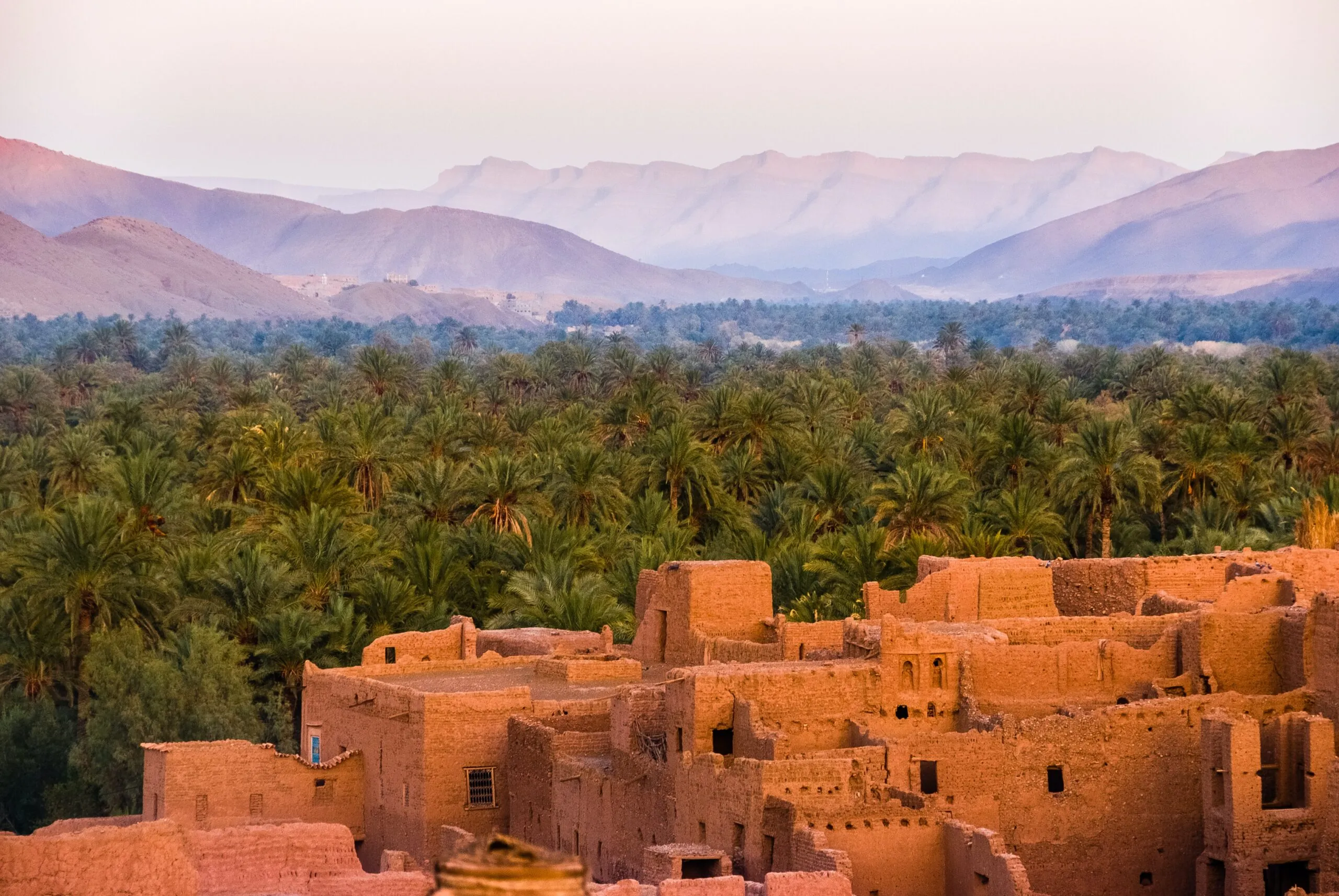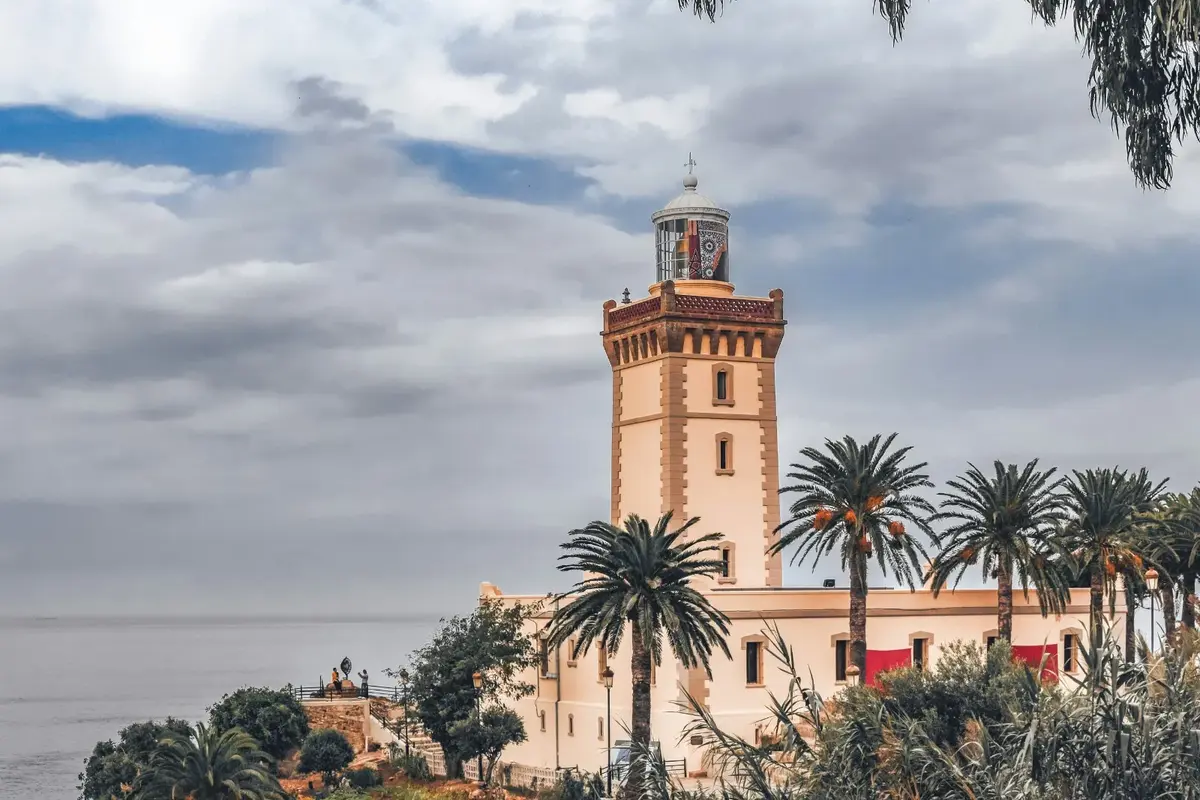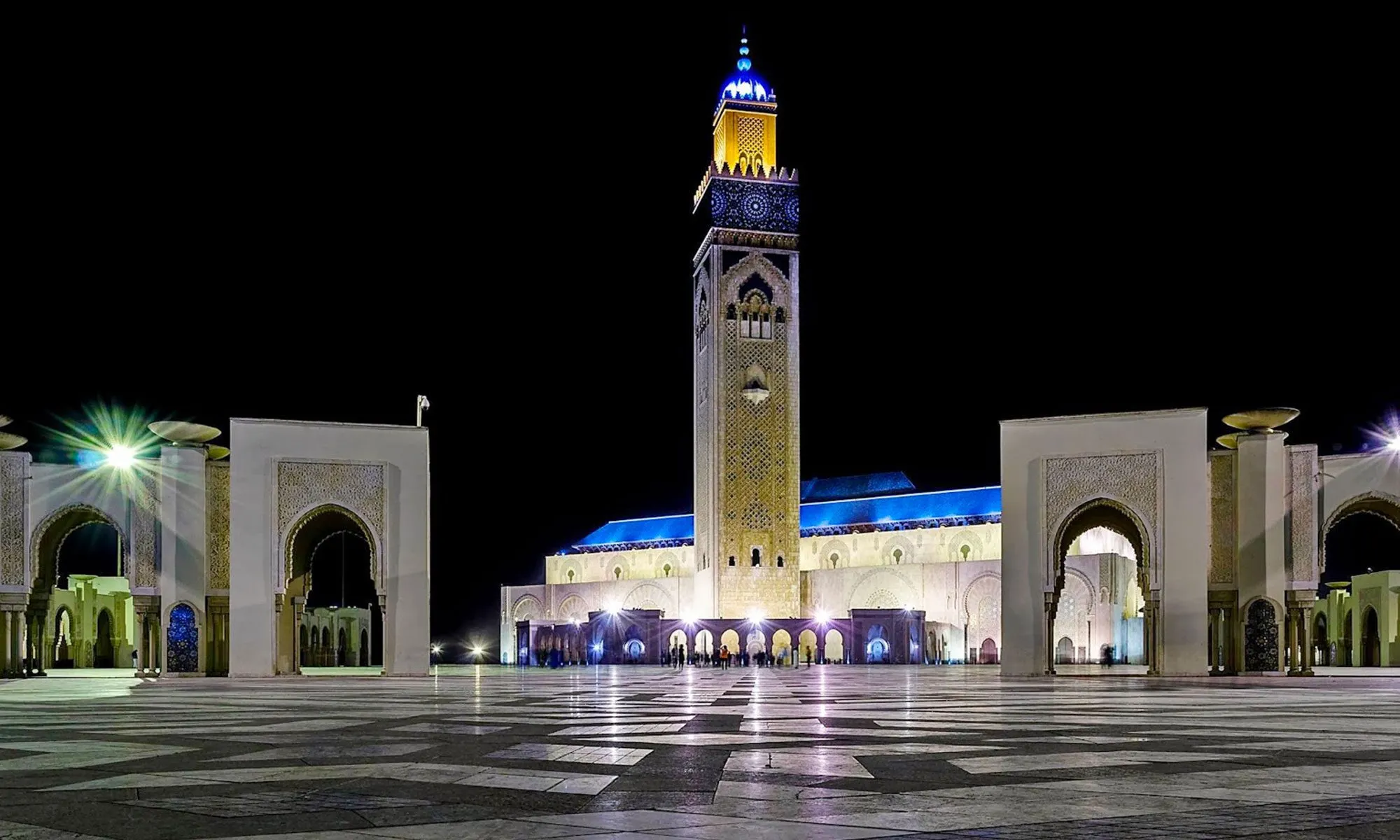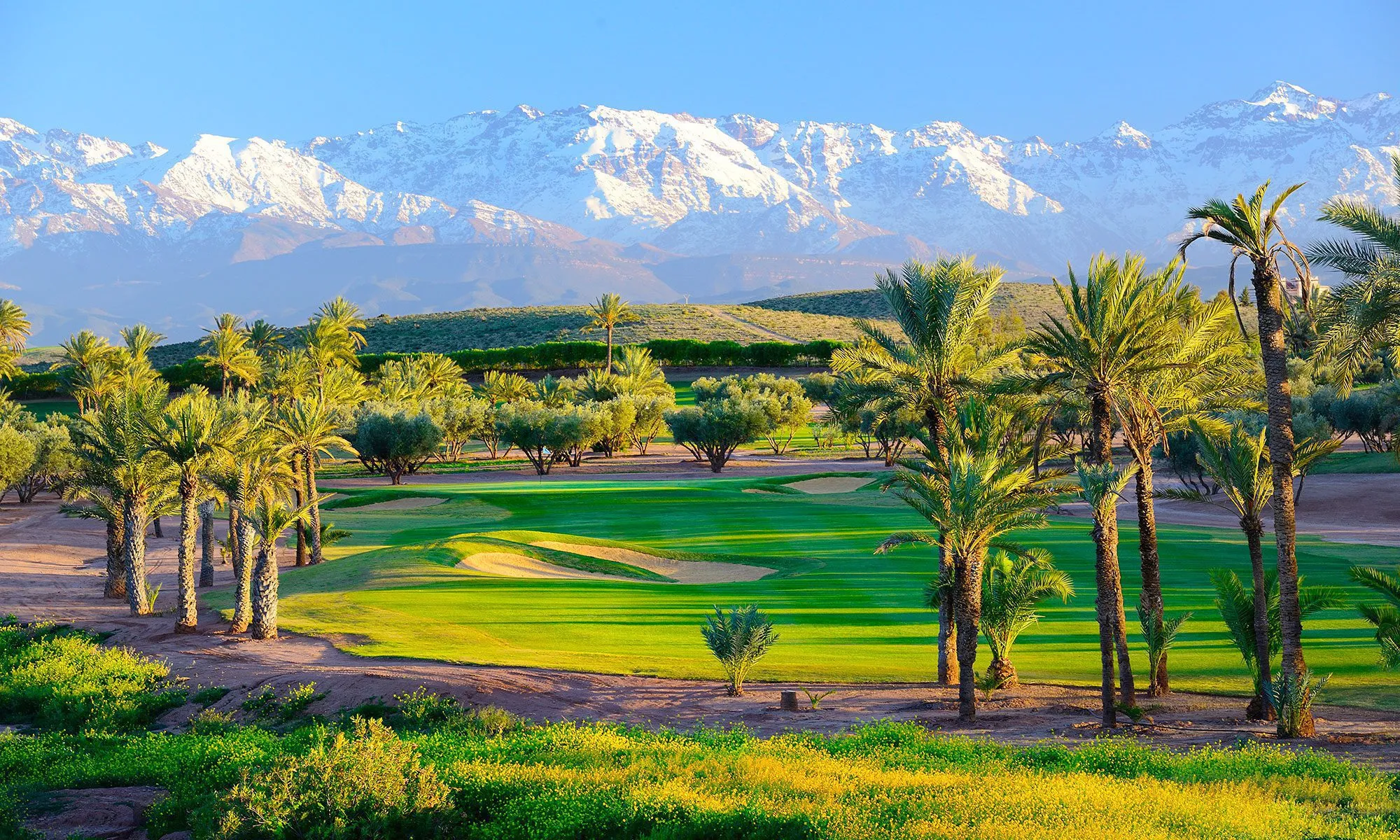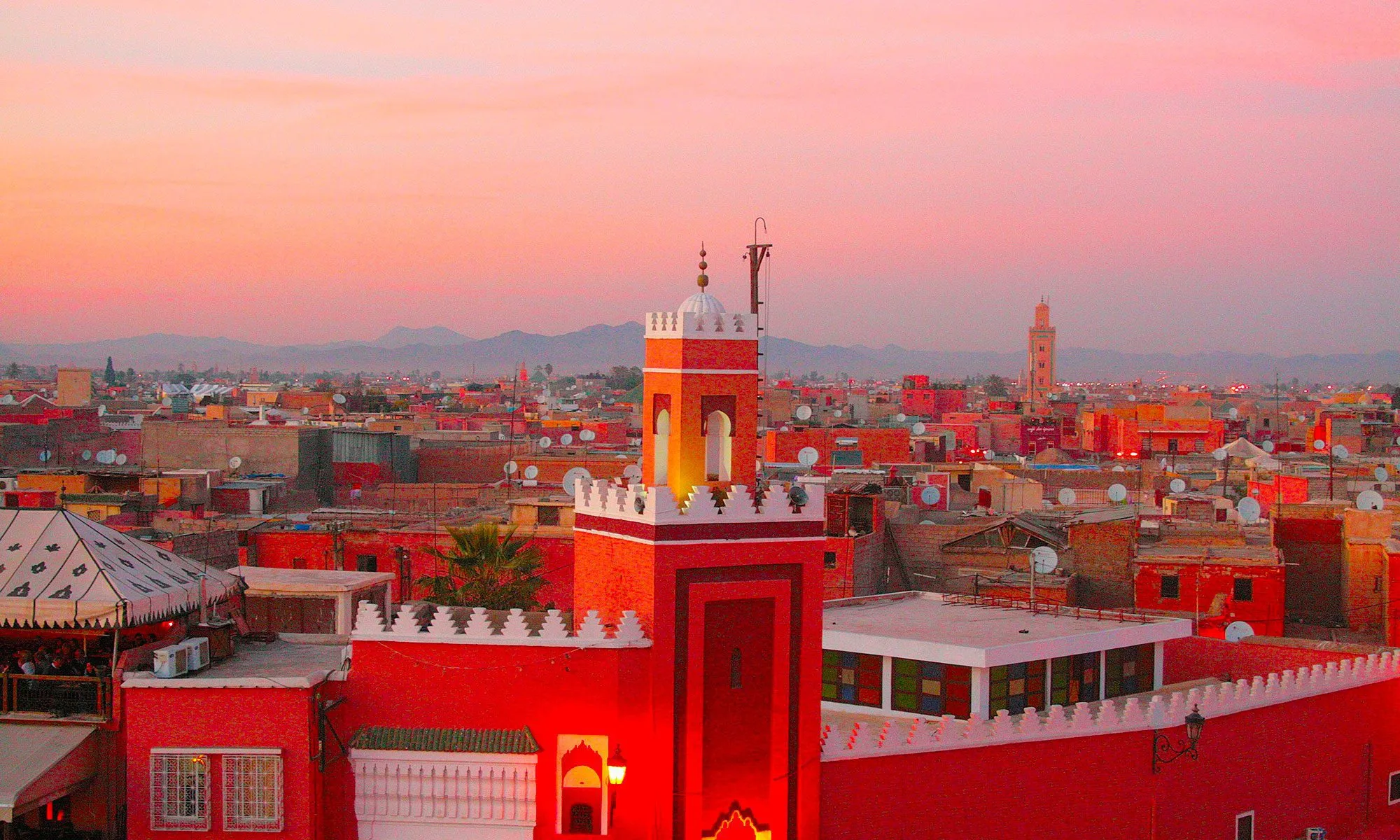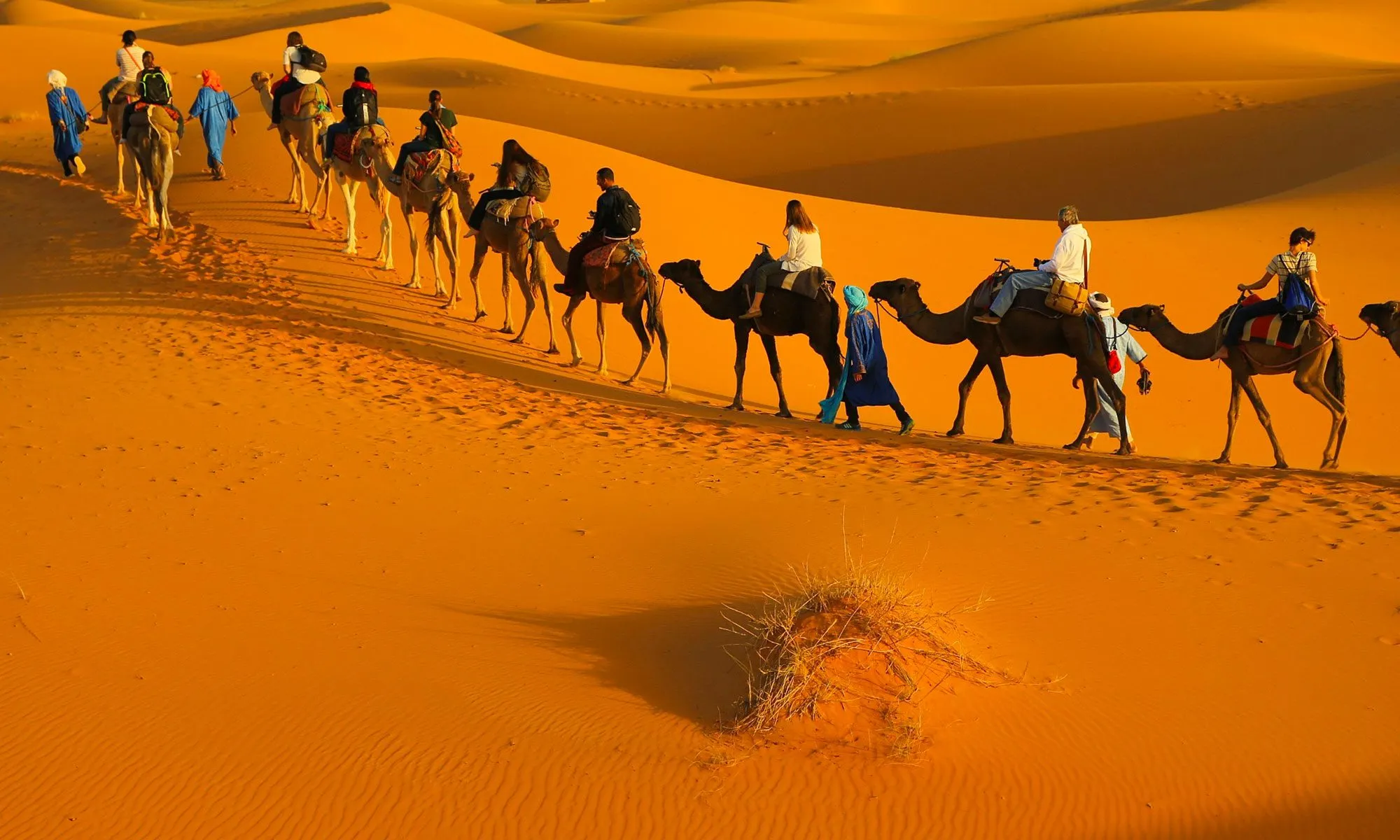A fascinating journey through different landscapes, a wealth of cultural heritage, and unforgettable experiences can be had by visiting the southern region of Morocco.
1- Draa Valley archeologists
One of the earliest prehistoric sculptures ever uncovered, the Venus of Tan-Tan figurine, was discovered by archaeologists in the Draa Valley. Furthermore, the Draa Valley was historically a major hub for trade between the Jewish, Arab, Berber, and Christian civilizations as well as a transit stop on the trans-Saharan caravan routes.The Draa Valley is quickly rising to the top of Morocco’s tourist attractions list because of its location, natural beauty, and rich history. Along the valley, a number of cozy and well-equipped hotels have sprung up. You may arrange a reasonably priced guided tour that includes activities like camel riding, mountain hiking, and seeing the stunning Chgaga or Tinfou dunes in the desert, where you can also take in the peace of the starry sky.
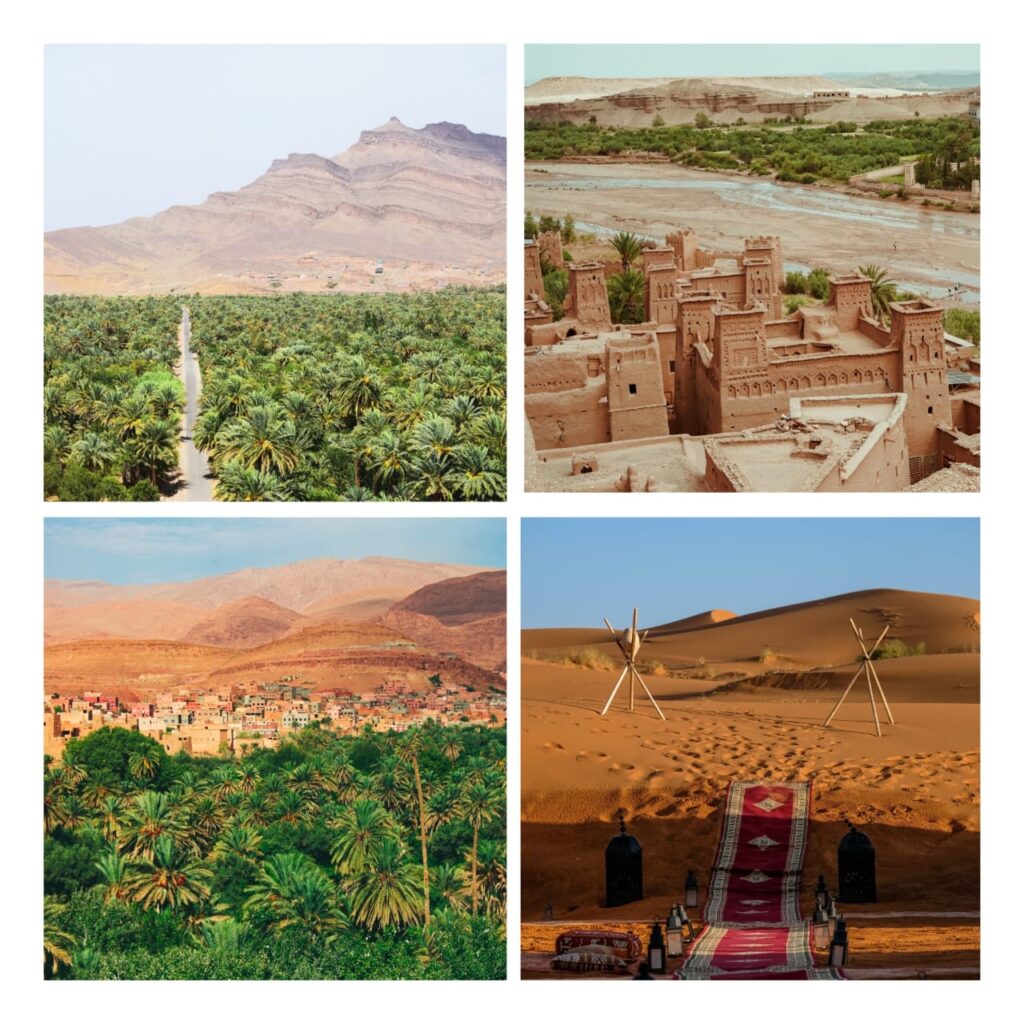
WHAT IS THE DRAA VALLEY AND WHY IS IT A MUST-VISIT IN MOROCCO
1- Scenic Beauty: The Draa Valley contains a variety of palm trees, rich farms, and beautiful scenery, making it a charming area. It’s commonly described as a “green strip” that provides a remarkable contrast to the dry desert terrain
2- Historical Significance: The valley is rich in history, with many ancient kasbahs, ksars, and typical Berber communities. These historical sites give light on Morocco’s rich cultural heritage.
3- Oasis Retreat: The Draa Valley offers comfort from the severe weather of threvitalizing atmosphere.e Sahara by acting as a veritable oasis in the desert. The river flowing through the rich plants gives a calm and
4- Traditional Berber Culture: Guests can experience the customs of the Berber people, engage with hospitable locals, and taste delicious Moroccan cuisine.
5- Gateway to the Sahara: The Draa Valley is perfectly placed for serving as the beginning point of excursions into the Sahara Desert. You can explore the sand dunes and take in the Sahara’s majesty from here.
WHERE IN MOROCCO IS THE DRAA VALLEY, AND HOW Can I GO THERE FROM MARRAKECH?
Situated in southern Morocco, the Draa Valley reaches from Ouarzazate town to the areas of Zagora. It is popular for the meandering Draa River, scenic oases, and beautiful palm groves.
There are several ways to go from Marrakech to the Draa Valley:
1- Road Trip: Traveling by car is the most popular way to get to the Draa Valley. It takes between 5 to 7 hours to complete the approximately 350 km (217 mi) journey, depending on the condition of the roads and any stops made along the way. Usually, you’ll travel along the N9 route, which takes you past charming towns and beautiful scenery like the High Atlas Mountains.
2- verland Tours: An easy way to discover the Draa Valley and its environs is to join in an organized overland tour. Usually, these packages consist of accommodation, transport, and guided touring.
RECOMMENDATION FOR creating THE IDEAL TOUR GUIDE TO THE DRAA VALLEY AND ITS GORGEOUS OASIS?
Creating the ideal travel schedule for visiting the Draa Valley and its gorgeous oasis requires striking a careful balance between adventure, cultural activities, and the beauty of the natural world. This is a step-by-step guide to assist you in making a journey that will be remembered:
1- Determine the Duration:Choose the number of days that you can spend in the Draa Valley. Typically, an itinerary lasts between two and four days,
2- Important Locations in the Draa Valley:Describe the Draa Valley’s must-see locations, like Zagora, an adorable city and the entrance to the Sahara Desert.
agdz: Famous by its breathtaking scenery and ancient kasbahs.
M’hamid: A secluded settlement in the desert, ideal for excursions into the Sahara.
Amezrou: Known for its historic ceramics and library customs.
to select accommodations based on your spending limit and preferences. For a distinctive experience, options include classic riads and kasbahs as well as desert camping.
1- tours with a guide:To get a deeper understanding of the Draa Valley’s culture and history, think about taking part in guided tours or hiring local guides in particular locations.
2- Adventure-Based Activities:For an exciting time, include adventurous activities like quad biking, hiking in the desert, and camel trekking.
WHAT ARE THE DRAA VALLEY’S ATTRACTING KASBAHS AND HISTORICAL SITES TO EXPLORE?
tour of Morocco’s cultural legacy can be had by visiting the fascinating kasbahs and historical sites dotting the Draa Valley, which is rich with history. Here are a few of the Draa Valley’s must-see kasbahs and historical sites:
1- Kasbah Tamnougalte:which is situated in Agdz, is a shining example of traditional Moroccan architecture. Discover its beautiful structures, mud-brick constructions, and the background of the Glaoui family, who formerly controlled this area.
2- Ksar Ait Ben Haddou: This UNESCO World Heritage site is a short drive from Ouarzazate and is a must-visit, even though it is officially outside the Draa Valley. Consisting of multiple kasbahs, this well-preserved ksar (fortified settlement) has been the subject of many TV series and movies.
3- Tamegroute: Renowned for its centuries-old library that has priceless manuscripts and writings, this small community is well-known for it. To see how pottery is made traditionally, you may also visit the village’s pottery cooperatives.
4- Kasbahs of M’hamid: When venturing deeper into the Draa Valley toward M’hamid and the Sahara, you’ll encounter several smaller kasbahs and desert settlements, each with its unique charm and history.
WHAT ARE THE MUST-VISIT STOPS ALONG THE WAY FROM MARRAKECH TO THE DRAA VALLEY, INCLUDING ZAGORA AND OUARZAZATE?
The trip from Marrakech to the Draa Valley, which includes major cities like Ouarzazate and Zagora, offers a wide range of sites and activities. The following locations are must-see over the way:
- Tizi n’Tichka Pass: As you depart from Marrakech, you’ll cross the High Atlas Mountains through the Tizi n’Tichka Pass. This mountain pass offers breathtaking panoramic views of the rugged Atlas terrain and is a great place to stop for photos.
- Telouet: About halfway to Ouarzazate, you’ll find Telouet, a town famous for its Kasbah Telouet. This impressive kasbah, once owned by the Glaoui family, is an architectural gem with intricate designs and historical significance.
- Aït Ben Haddou: Just before Ouarzazate, you’ll reach Aït Ben Haddou, a UNESCO World Heritage site and one of Morocco’s most iconic ksars (fortified villages). Explore the kasbah’s narrow alleys and marvel at its well-preserved mud-brick architecture. It’s also a popular filming location for movies and TV shows.
- Ouarzazate: Known as the “Hollywood of Morocco,” Ouarzazate is a gateway to the Sahara Desert and a thriving film industry. While here, visit the Atlas Film Studios, where many famous movies have been filmed. Ouarzazate also has its own kasbahs, such as Kasbah Taourirt, to explore.
- Valley of Roses (Kelaat M’Gouna): As you continue towards the Draa Valley, you’ll pass through the Valley of Roses. This region is famous for its rose cultivation and rosewater production. Visit in late spring to witness the blooming rose fields.
- Draa Valley Oasis: Upon reaching the Draa Valley, explore the lush date palm oasis and picturesque landscapes. You’ll find various small towns and villages along the way, each with its own charm and kasbahs to discover.
- Agdz: Agdz is a tranquil town in the Draa Valley known for its historic kasbahs and beautiful landscapes. Kasbah Tamnougalte is a must-visit, offering a glimpse into the valley’s history.
- Zagora: Often considered the gateway to the Sahara Desert, Zagora is a charming town with a relaxed atmosphere. It’s a great base for Sahara adventures and camel treks. The town is also known for its “52 Days to Timbuktu” sign, a historical reference.
- M’hamid: For a more remote desert experience, continue to M’hamid, which marks the end of the paved road in the Draa Valley. It’s an ideal starting point for Sahara excursions and camel rides to the dunes of Erg Chigaga.
- Erg Chigaga Dunes: While not directly on the way, the Erg Chigaga dunes are worth a visit if you have the time. These remote and pristine dunes offer a more secluded Sahara experience compared to Merzouga.
WHICH TIME IS BEST FOR DRAA VALLEY DISCOVERY?
The ideal time for exploring Morocco’s Draa Valley will mostly depend on your interests and the kind of experience you’re looking for. The area has several seasons, each with unique advantages of its own:
1- Spring: The Draa Valley is best visited in the spring, which runs from March to May. The daily highs are in the pleasant warm range of 20°C to 30°C (68°F to 86°F). Beautiful views are created by the vibrant green date palm oases and the colorful landscapes. Hiking and camel trekking are two of the best natural things to enjoy in the spring.
2- autumn(September to November): Just like spring, is a great time to visit the Draa Valley. With temperatures ranging from 20°C to 30°C (68°F to 86°F), the weather is quite pleasant. It’s a great time for outdoor excursions and cultural events, and the region’s gardens and palm groves are brilliant.
3- Winter (December to February): With daily highs of 15°C to 20°C (59°F to 68°F), winter is the Draa Valley’s coldest season. Even though the days are usually nice for sightseeing, especially in the desert regions, the evenings can be rather cold. Because migratory birds visit the area in the winter, it’s a great time to go birdwatching.
4- Summer (June to August): The Draa Valley experiences scorching summers, with daytime highs frequently reaching 35°C.
WHAT LANGUAGE IS USED IN THE DRAA VALLEY?
The main languages spoken in Morocco, including the Draa Valley, are:
1- Arabic: The official language of Morocco, Standard Arabic (also known as Modern Standard Arabic) is utilized in formal communication, government, and education. To varied degrees, most Moroccans are able to comprehend and speak Arabic.
2- Berber : In Morocco, especially in the Draa Valley, Berber languages is native deeply spoken. Though regional dialects may differ, Tashelhit, often spelled Shilha, is one of the most commonly used Berber tongues in southern Morocco.
3- French: French is widely spoken as a second language in Morocco, and many people there, especially those who are educated and live in cities, are fluent in the language. It is frequently utilized in higher education, business, and tourism.
4- Spanish: In certain parts of Morocco, such as places
Activities in Agdz Zagora and Mohamid South morocco
Visit the Draa Valley agdz: Take a scenic drive or hike through the Draa Valley, exploring the lush palm groves, oases, and traditional villages along the Draa River. The landscapes are perfect for photography enthusiasts.
- Local Markets (Souks): Immerse yourself in the vibrant local culture by visiting the markets, where artisans showcase their crafts, including carpets, pottery, spices, and leather goods. It’s an excellent place to interact with locals and experience daily life.
- Desert Excursions: Venture into the Sahara Desert on guided tours or camel treks. Enjoy the vastness of the dunes, experience a desert sunset, and perhaps spend a night camping under the star-studded sky.
- Hiking and Outdoor Activities: Explore the nearby trails and foothills of the Atlas Mountains for hiking or mountain biking adventures. The landscapes offer diverse terrain for outdoor enthusiasts.
- Traditional Workshops: Participate in workshops to learn about traditional crafts like pottery making, carpet weaving, or even cooking classes to experience local cuisine firsthand.
- Relaxation and Reflection: Embrace the tranquility of Agdz by simply unwinding in the peaceful ambiance, taking leisurely strolls along the riverbanks or enjoying the views from one of the rooftop terraces.
Whether you’re into history, outdoor activities, cultural immersion, or simply seeking a slower pace amid stunning surroundings, Agdz offers a mix of experiences that cater to various interests.
3. The heart of palms, zagora
Zagora, nestled at the edge of the Sahara Desert in Morocco, is a gateway to an enchanting world of ancient traditions, stunning landscapes, and cultural richness. As a town with a more relaxed pace compared to bustling Moroccan cities, Zagora offers a serene atmosphere that allows visitors to immerse themselves in its unique charm.
Scenic Landscapes and Desert Adventures
Zagora’s landscape is a canvas of breathtaking beauty. The town is surrounded by palm groves, which are part of the Draa Valley, adding a touch of greenery to the arid surroundings. But it’s the proximity to the Sahara that truly defines Zagora’s allure. Travelers often embark on desert excursions from here, venturing into the vast dunes, including the iconic dune of Tinfou. The experience of riding camels, spending nights in traditional Berber camps under a star-studded sky, and witnessing the shifting sands at sunrise or sunset is simply unforgettable.
THING TO IN ZAGORA
- Trekking in the Draa Valley: Explore the stunning Draa Valley with its palm groves, kasbahs, and Berber villages. You can hike or take a camel trek through this picturesque region.
- Visit Tamegroute: This village near Zagora is known for its famous pottery and the ancient Quranic library with manuscripts dating back centuries.
- Desert Excursions: Zagora is often the gateway to the Sahara Desert. Consider a desert tour, spending a night in a traditional Berber camp, experiencing the vastness and magic of the dunes.
- Kasbahs and Historical Sites: Discover the historical heritage by visiting Kasbah Amridil or the Kasbah of Tissergate, which are ancient fortresses that offer a glimpse into the region’s past.
- Local Markets: Explore Zagora’s markets where you can find authentic crafts, spices, and traditional goods.
- Cultural Immersion: Engage with locals, learn about Berber traditions, and possibly participate in a traditional tea ceremony.
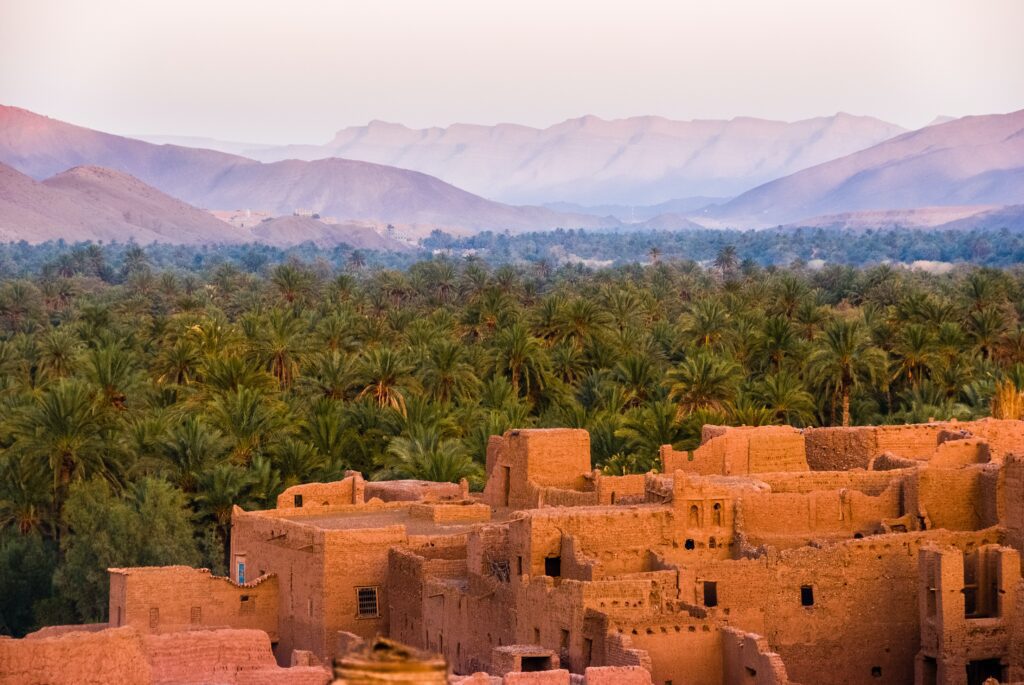
4. The golden dunes of M’Hamid El Ghizlane
M’Hamid El Ghizlane is a small oasis town situated in the Zagora province in southeastern Morocco, near the Sahara Desert. It’s known as the gateway to the Sahara due to its location at the edge of the desert. The town serves as a launching point for many desert expeditions and camel treks into the vast dunes of Erg Chigaga and Erg Chegaga.
The area around M’Hamid El Ghizlane offers a glimpse into the traditional Berber way of life. Berbers are an indigenous ethnic group in North Africa with a rich cultural heritage. Visitors often have the opportunity to experience Berber hospitality, explore local markets, and witness traditional music and dance performances.
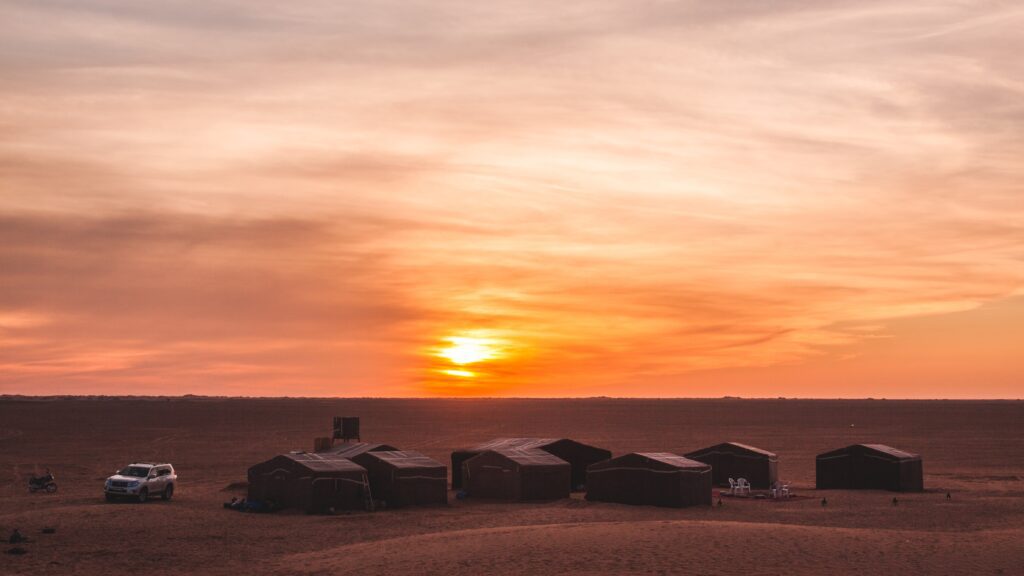
thing to do in M’Hamid El Ghizlane
M’Hamid El Ghizlane offers a range of activities for travelers looking to South Morocco to explore the Sahara Desert and experience the rich culture of the region. Here are some things you can do while visiting:
- Camel Trekking: One of the most popular activities is riding camels into the desert. Local guides lead expeditions through the dunes, allowing you to experience the vastness and beauty of the Sahara.
- Overnight Desert Camping: Spend a night under the stars in a traditional Berber camp. Enjoy local food, music, and storytelling around a campfire while immersing yourself in the tranquility of the South Morocco.
- Sandboarding and Dune Exploration: Have fun sliding down the dunes on sandboards or simply explore the majestic sand formations on foot.
- Visit Erg Chigaga and Erg Chegaga: These stunning sand dunes are a must-see. They offer breathtaking vistas and a chance to experience the vastness of the Sahara.
- Local Cultural Experiences: Engage with the local Berber community. Visit villages, interact with locals, learn about their traditions, and maybe even participate in traditional music and dance performances.
- Off-Road Adventures: Take a 4×4 excursion to explore the desert landscapes beyond what camels can reach. This allows for a different perspective on the desert terrain.
- Sunset and Sunrise Views: Experience the magical moments of sunrise and sunset over the dunes. The colors of the sky against the desert backdrop are truly mesmerizing.
- Exploration of Oases: Explore the nearby palm groves and oases, offering a refreshing contrast to the arid desert landscape.

